This summer I’ve been watching what used to be a manicured lawn turn into a meadow. Seeing the changes month to month has shown that what pleased me in June …
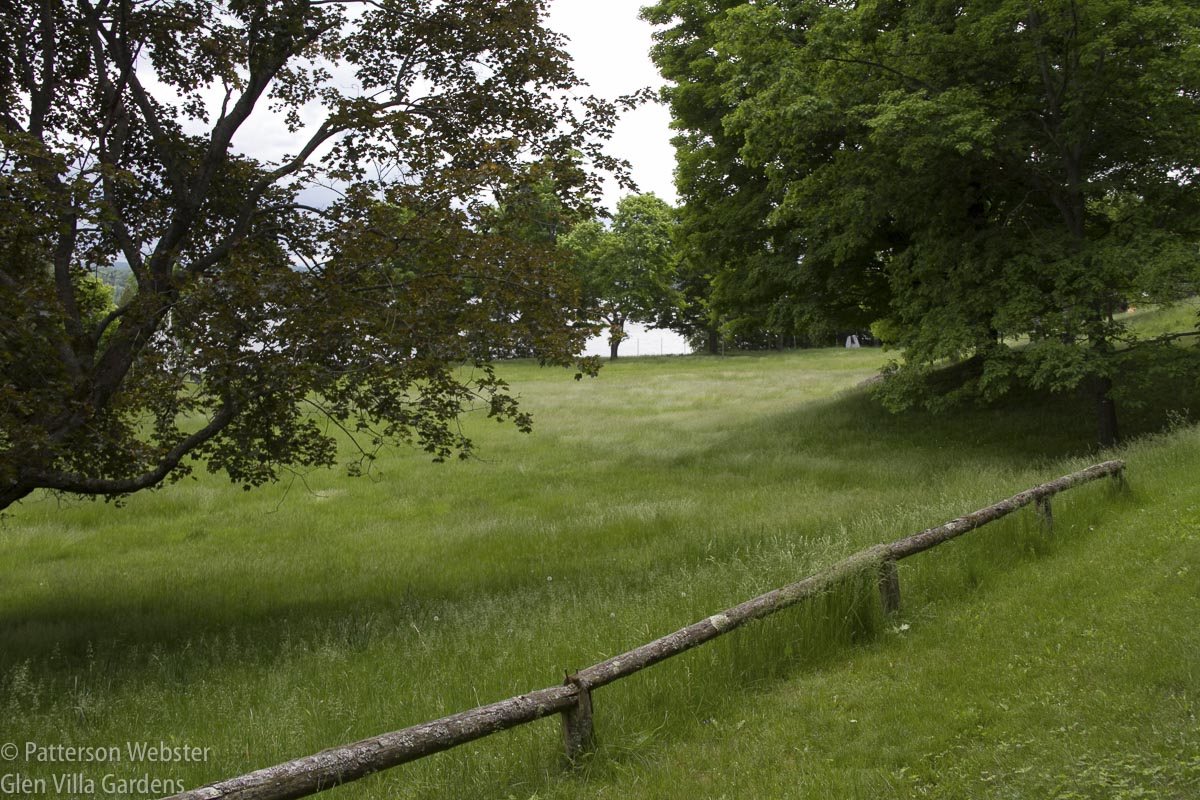
The view from the driveway gives some idea of the size of the Big Meadow.
became even better in July.
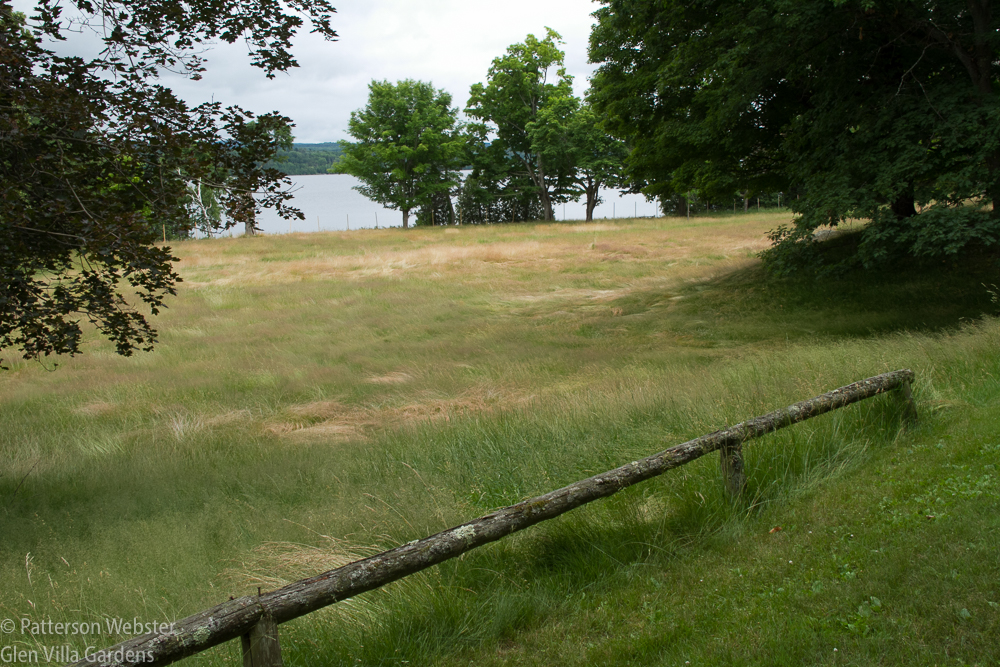
Grasses on the prairie used to be called oceans of grass. Now I know why.
I was thrilled. Was the transformation from lawn to meadow going to be as easy as doing nothing?
I’m afraid not. Because in August, the same view is leaving me flat.

The grasses in this August view of the Big Meadow have been flattened by wind and rain as well as by their own weight. Overall, the positive feeling I was getting earlier in the summer is no longer the same.
The grasses still move beautifully in the wind and from a distance the big view looks good. But there is much less green, except for the mown path.
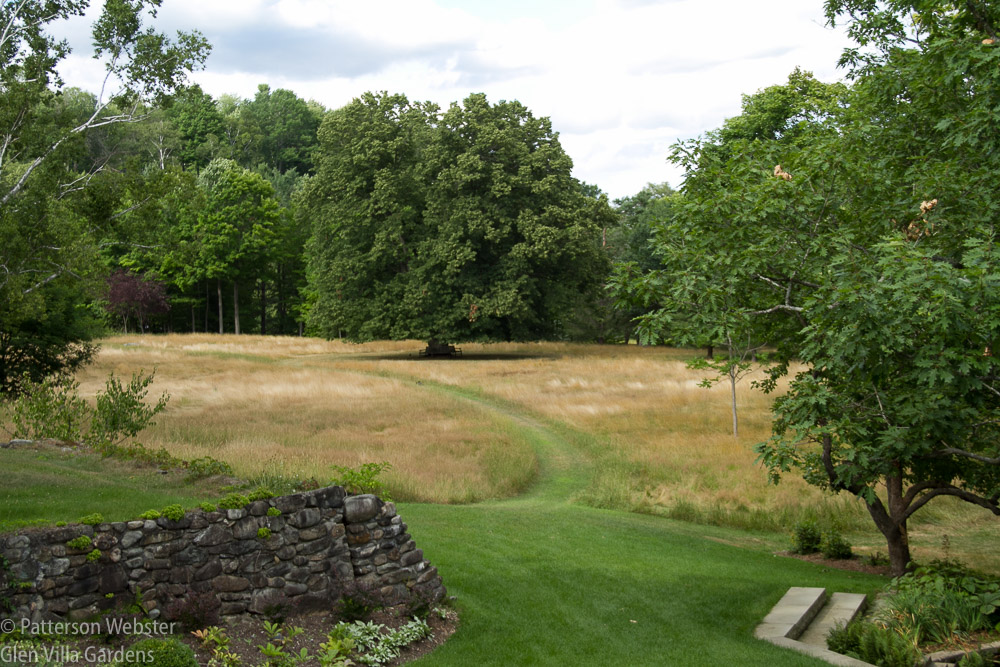
The mown path is essential. Not only does it offer a colour contrast, it shows that the long grass is a deliberate choice rather than the result of neglect.
Viewed up close, the Big Meadow now feels sad. Unlike the promising variety of wildflowers earlier in the summer, there are now very few, and those, such as the occasional daisy-like flowers that are spotted here and there, aren’t strong enough to make an impact.
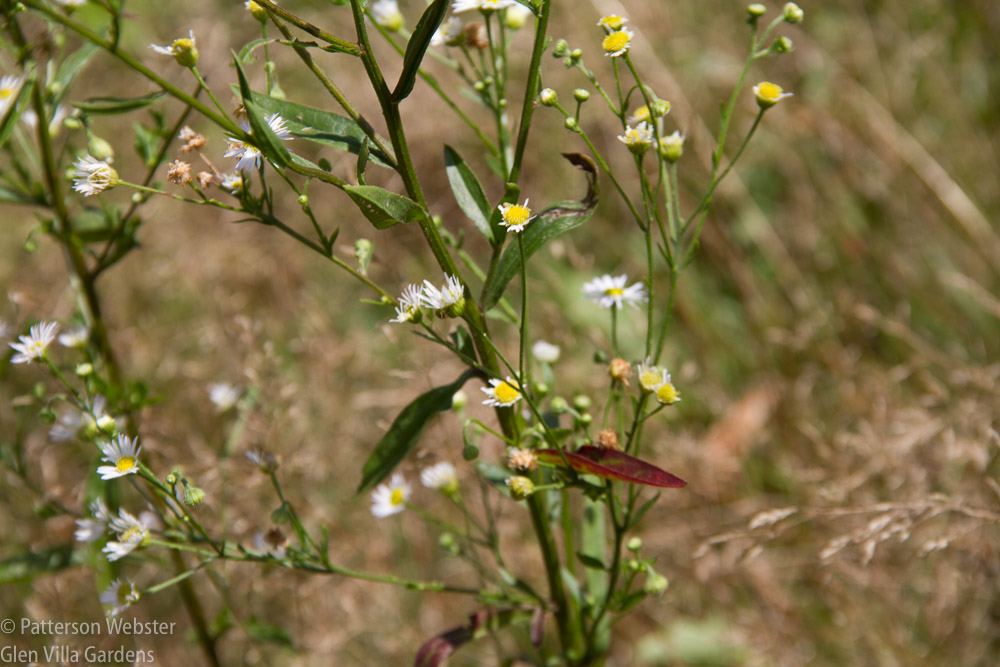
A huge patch of these might be interesting, but scattered one by one, they appear too weak to hold the space.
The occasional touch of yellow appears, but the flowers read more like weeds than desirable wildflowers.
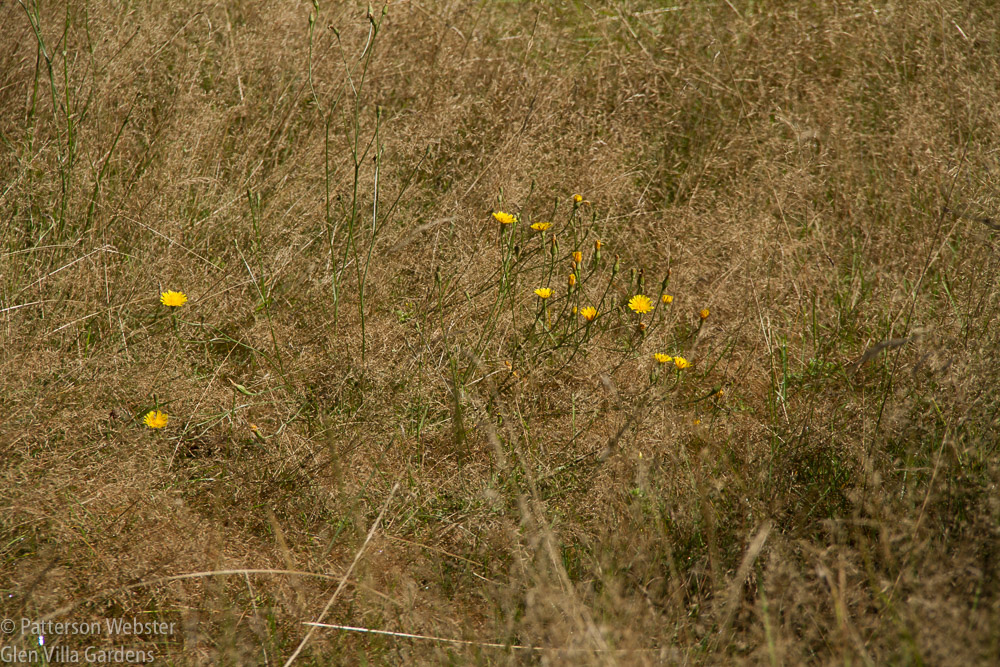
Is this a hawkweed reblooming?
I can attribute the sad feeling to an end-of-summer mood, and the extremely dry conditions we’ve experienced all summer long haven’t helped. Nonetheless, it is clear that something needs to be done.
Earlier in the season I added a single giant hysspop (Agastache ‘Blue Fortune’) purchased at a local nursery. It has grown well and I can imagine that several large groups of this plant would look good. In fact, hyssop seems to be a good choice in general. Several varieties are available and will grow in my cold climate zone; all like full sun and dry to medium soil that isn’t rich — which describes exactly the conditions I am working with.
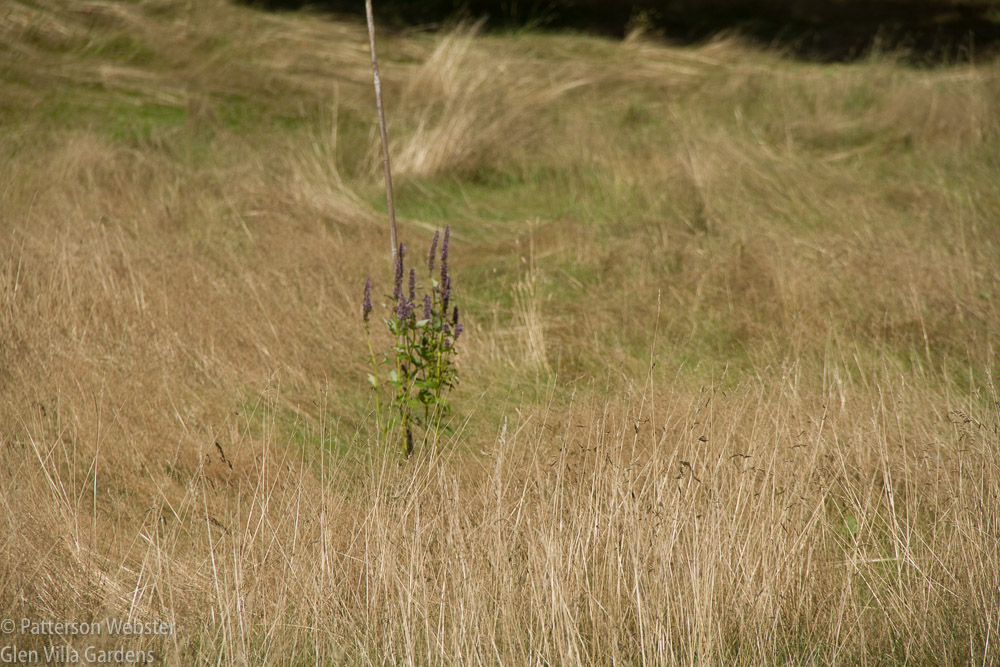
This is Agastache Blue Fortune, a hybrid of A. foeniculum and A. rugosa. If it seeds itself, I’ll be happy.
Scattered around the Big Meadow are flat patches calling out for something more. The problem I face, though, is the size of the Big Meadow. It is enormous — on average about 250 feet wide and long. That’s 62,500 sq. feet, if my math is right. To make any kind of statement, I need a lot of plants.
Yesterday I staked out 15 patches that vary in size from around 50 square feet to 600 square feet. (I haven’t measured the areas so these dimensions are guesses more than estimates.) I figure in total I have some 4000 square feet of ground to cover, and that may not be enough to make an impact in the space.

Roping off the areas gave me a better feeling for the size and shape of different areas where wildflowers would make a positive difference.
Planting an area that large with even small plants isn’t an option. As I did with the Agastache, I could buy the occasional plant and hope it will seed itself. But that would take more time than I like. I could plant plugs, but I haven’t found a Canadian source for wildflower plugs and even if I could find one, the cost would most likely be prohibitive. So seeding seems to be the best, if not the only, approach.
But how to do it? And what seeds or plants to use? I have four different types of ornamental grasses growing in different parts of the garden — Panicum ‘Heavy Metal’ and ‘Northwind;’ two types of Calamagrostis, ‘Karl Foerster’ and brachytricha; several types of Miscanthus sinensis and Sporabolus heterolepsis, commonly known as prairie dropseed. Many of these would benefit from being divided, particularly the prairie dropseed now on the verge of overwhelming a section of the Aqueduct. It and the Panicum cultivars are native to North America, unlike Miscanthus sinensis and Calamagrostis brachytricha whose origins are in Asia. Still, I worry that they will feel wrong in the space.
Seeding wildflowers isn’t an easy job. I don’t have the time or patience to start seeds inside and transplant them next year, so I’m considering how to seed on the spot. One idea is to cut the grass very short in selected spots, scatter seeds there and finish by adding a top dressing of soil. Will this work? I have no idea but it is the approach I’m leaning towards.
I’m developing a list of plants that I hope will flourish. Agastache, Echinacea pallida, Veronicastrum virginicum and Verbascum nigrum var. album are on the list, as are different types of Sanguisorba or burnets. Others, like Ratibida pinnata and Patrinia scabiosifolia are possibilities, although I want to avoid adding too many yellow flowers since I expect goldenrod will appear, whether I want it or not.
Do you have advice to share? I welcome your ideas. I also welcome suggestions for plants to use. Since the mix of wildflowers that appeared in June and July felt good to me, and since I am relatively confident that they will spread as the years go by, I’m particularly interested in adding wildflowers that bloom later in the season and that will survive winter temperatures that can drop to -30C. The soil is sandy and dry except in a few precious places, and the area is in full sun for most of the day.
On a different topic, I was delighted to be named as a ‘Garden Maker’ on the prestigious UK blog, ThinkinGardens. A piece written by the inimitable Anne Wareham, who runs the site, makes the case for reserving that title for people who make their own gardens — and for differentiating the name from those used to describe professional garden designers, landscape architects, gardeners or horticulturalists. She names five individual Garden Makers, three in England and two in North America. I was honoured to be one of the group.





